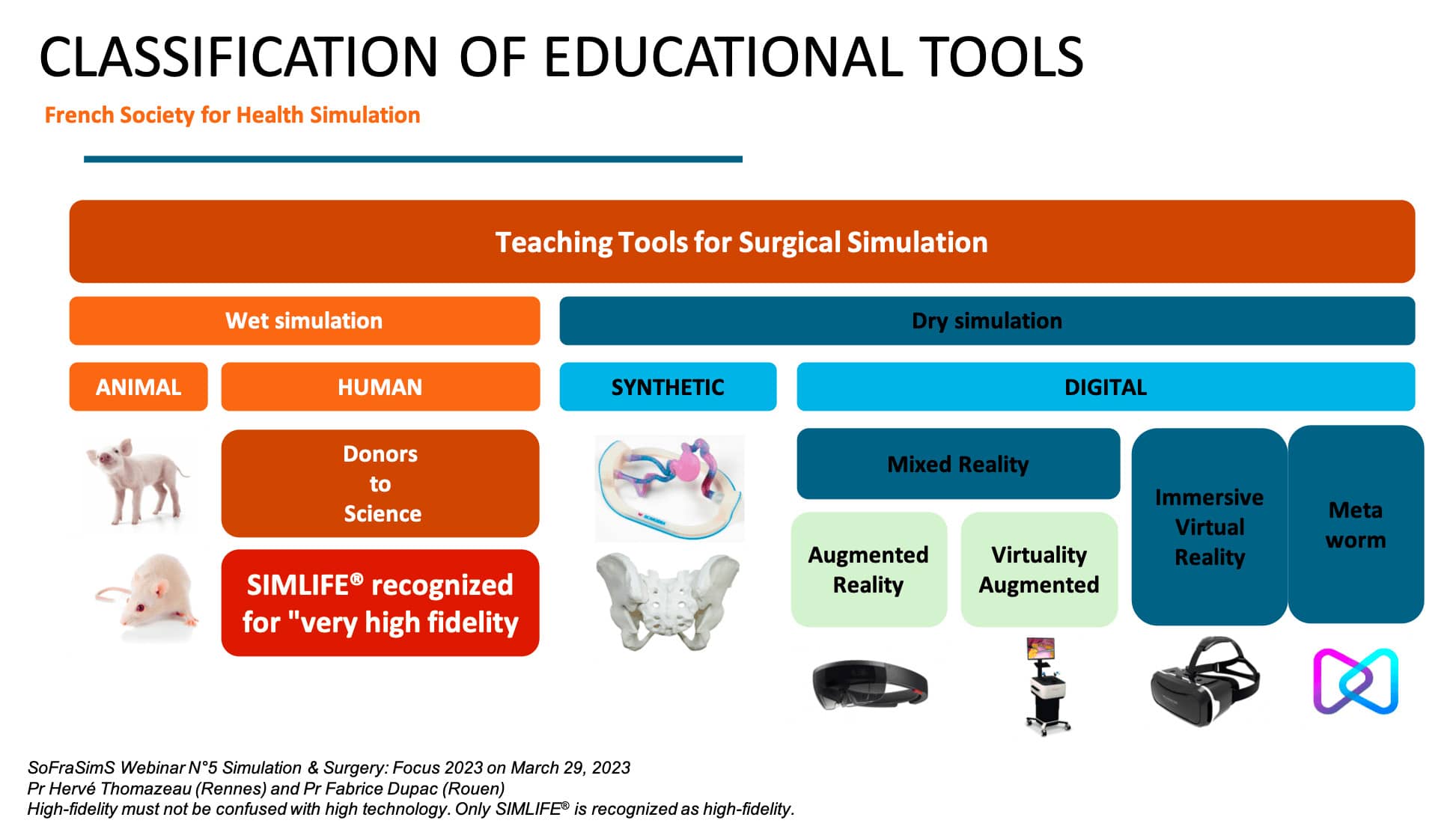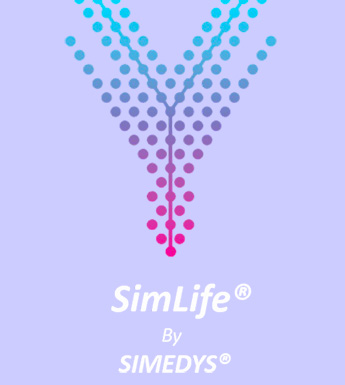Teaching Tools for Surgical Simulation
According to the French National Academy of Medicine, human surgical training is still largely dependent on animal experimentation and plays a crucial role in the quality and safety of surgical practices. Currently, 1.7% of all animal uses for scientific purposes are for teaching purposes, including surgical training (35,738 animal uses in 2023).
Various tools are available for teaching human surgery, including human cadavers (governed by Decree 2022-719), animal models, synthetic simulations (mannequins), and devices based on virtual, mixed or augmented reality.

An award-winning surgical innovation
In April 2025, at the MedInTechs conference in Paris, Simedys (Simulation Médicale Dynamique), a French pioneer in surgical simulation, won two awards for its SimLife® technology: the Trophée de l'Innovation Technologique and the Prix du Public de l'Innovation 2025. In 2024, Simedys was nominated for the Prix Galien in the United States as one of the best startups.
This "very high fidelity" surgical simulation device is designed for training students and healthcare professionals. SimLife® uses human bodies donated to science, that are pulsatile, revascularized, and re-ventilated. This enables the reproduction of near-real operating conditions for the learning and assessing of surgical skills.
This new approach, which makes it possible to recreate physiological functions on cadavers and offers a concrete complementary alternative. By adhering to an extremely rigorous ethical protocol, it honors the gift of the body to science, lending a human and meaningful dimension this practice. The Simedys team affirms its commitment to "embracing these human and societal values" and contributing to ethical discussions about the future of medical training.
How can we improve the training of healthcare professionals while ensuring high-quality learning?
At a time when the cost of medical training is constantly rising, using donor bodies is a rationalization strategy. SimLife® enables complex procedures to be carried out at a lower cost. This reduces reliance on costly hospital structures for training while guaranteeing quality learning.
A study conducted at the University of Bologna's Anatomy Center evaluated the performance of SimLife® with 62 participants from 13 medical specialties.
The professionals, divided into 18 teams, performed 31 interventions ranging from exploratory procedures to complex operations with a 100% success rate.
Key results are as follows:
-
86% of participants found the technology "extremely useful" for training.
-
84% found that teamwork was enhanced.
-
98% would like to repeat the experience.
However, the study also highlighted technical limitations, including a lack of microvascular and coagulation simulation and the complexity of body preparation. These limitations must be addressed for wider adoption.
Since 2024, the Normandy School of Surgery in Rouen and APHP surgical schools have organized training sessions in real operating room conditions, demonstrating the value of this innovation in the field.
Training without live animals: Could SimLife® do it?
This approach opens up interesting prospects for reducing the number of animals used in human, experimental, and veterinary surgery. SimLife Vet® models can be paused to simulate serious situations, such as cardiac arrest or major wounds, or to provide real-time theoretical and anatomical reminders. However, there are a number of limitations, including the size of the simulated animals, the issue of model supply, and technological cost. Zoos and veterinary schools have already contacted SimLife Vet® technology, which could pave the way for a new, more ethical, and equally effective way of learning. It is open to all veterinary collaborations.
By placing the principles of "never the first time on the patient" and "never the first time on the animal" at the heart of every medical and scientific decision, professionals reaffirm their ethical commitment to both human patients and animals.
Primum non nocere


